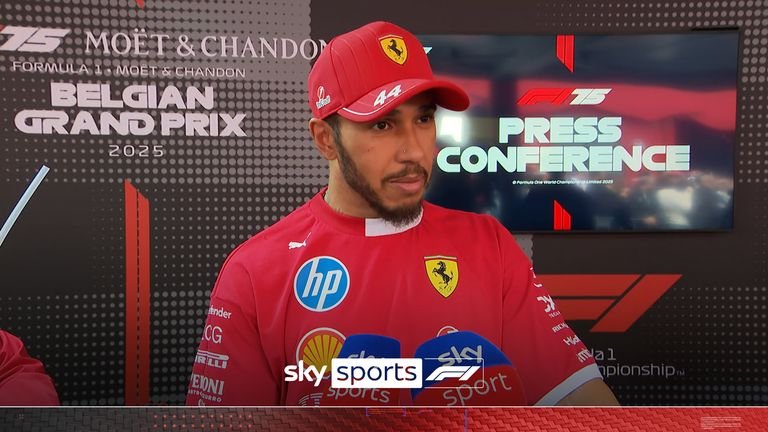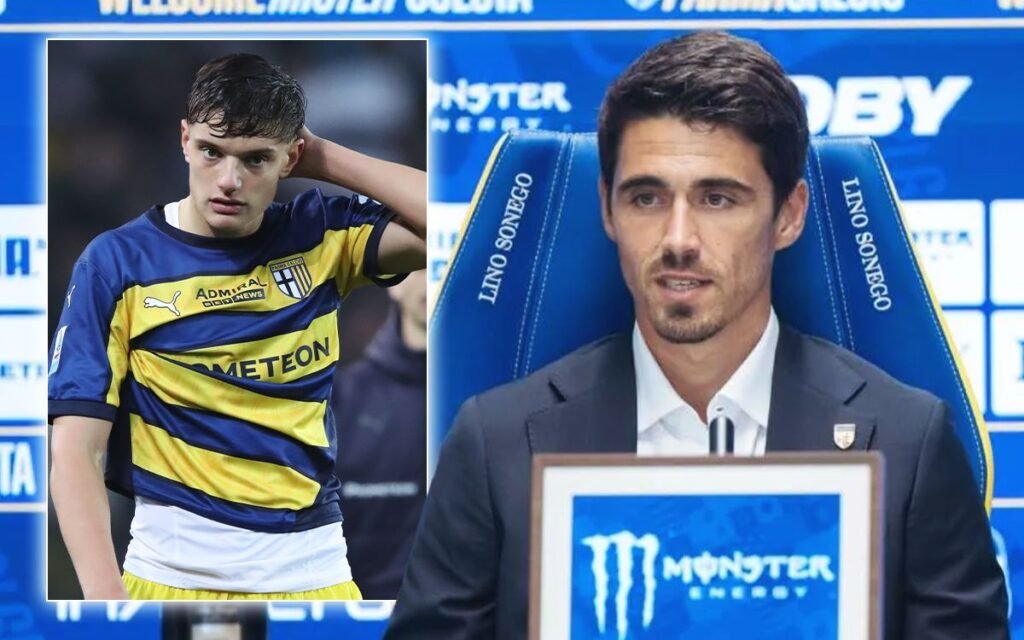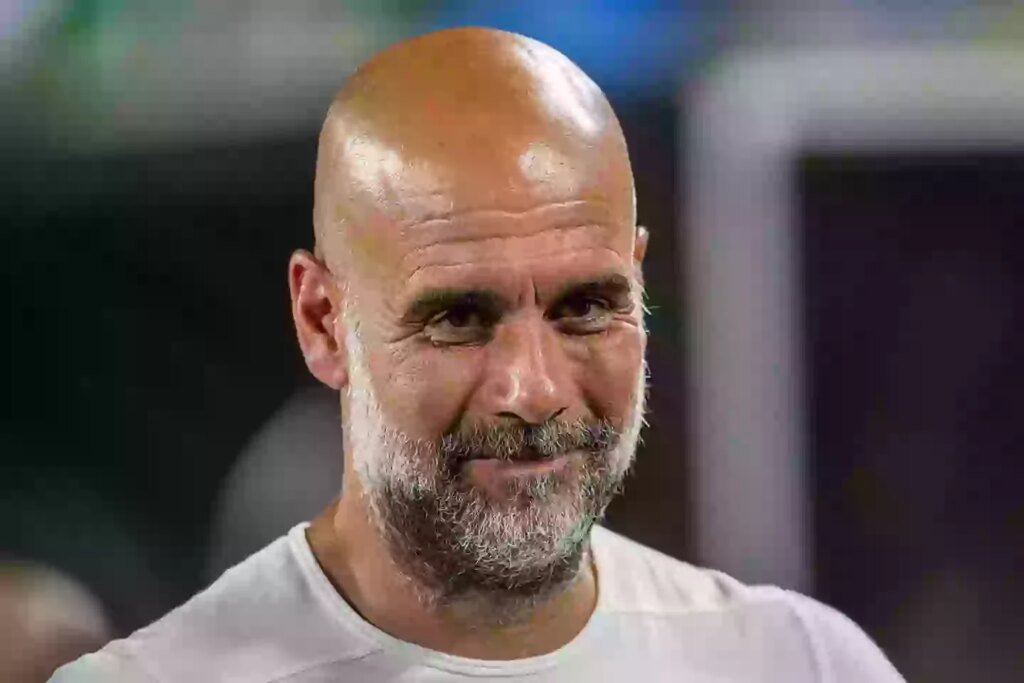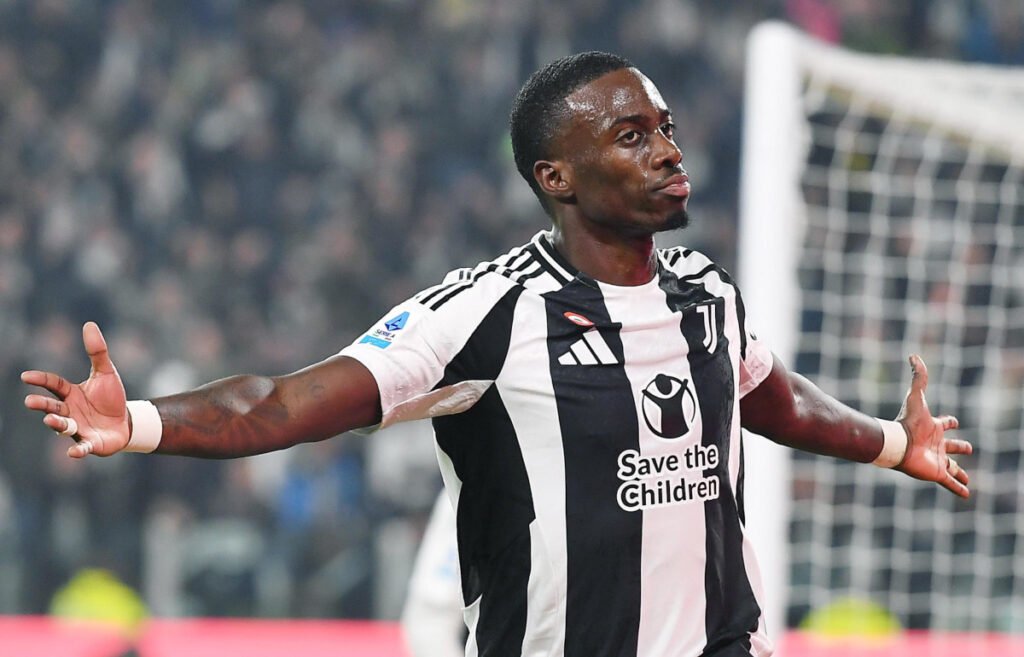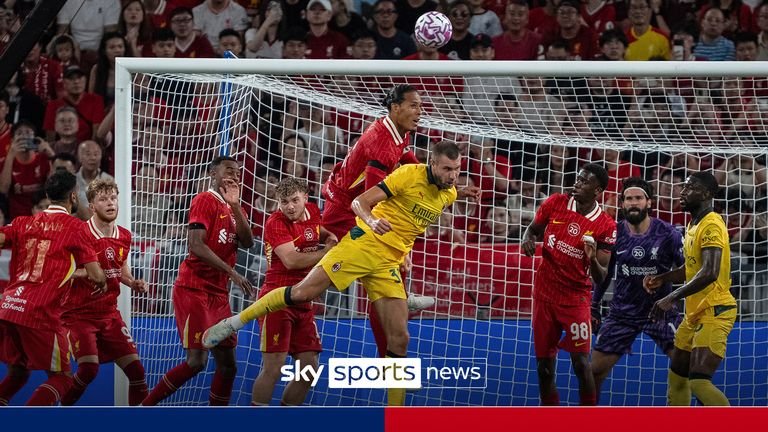- Stefan Appenowitz’s Background: Stefan Appenowitz is a German football shirt historian and author, known for his books on Bundesliga kits and club-specific shirts, turning his passion into storytelling projects.
- Book Projects and Focus: Appenowitz has published books such as ‘Bundesliga-Trikots’ and club-specific books on Borussia Mönchengladbach and Eintracht Frankfurt, focusing on the stories behind the kits, outfitters, sponsors, and merchandising history rather than just match details.
- New Projects: Stefan created Trikotmagazin, a platform for in-depth football kit stories, and a newsletter called STOFFKUNDE, aiming to provide information and insights for football and shirt enthusiasts.
Sure, a football shirt keeps players from running around half-naked – but for many fans, it’s much more than that. Few understand this better than Stefan Appenowitz, one of Germany’s leading football shirt historians.
Support the author by subscribing to Stefan’s brand-new newsletter about football kits
From discovering the magic of Bundesliga kits in old Kicker magazines in the 1980s (Kicker is Germany’s most famous football publication) to publishing detailed books chronicling the shirt history of the German Bundesliga and Borussia Mönchengladbach and Eintracht Frankfurt, Appenowitz has turned his lifelong passion into an ambitious storytelling project.
Instead of collecting shirts, I am collecting the stories behind them
We sat down with him to talk about his journey, his books, the evolution of kit culture, and the dream of turning Trikotmagazin into a thriving platform for shirt stories that go way beyond the pitch.
Part 1: Personal Story
How did your passion for kits begin? Do you remember the first shirt that caught your eye or that you owned?
It started at the beginning of the eighties. I was about 11 or 12 years old. Back then, the Kicker Sportmagazin published its yearly special edition before the start of Bundesliga, with team photos of all the clubs of the first and second divisions. At which I first looked every year. Which new kits, outfitters, and kit sponsors are the teams present in these photos?
It is crucial for me that almost every shirt in the books is matchworn and not a replica
The real kick came when, in the nineties, new players in the outfitter market like Nike, Asics, Patrick, Fila, Erbacher, Reusch, Diadora, to name a few, came in and took away market shares from Adidas and Puma, who had ruled the Bundesliga from the middle of the seventies on.
Stuttgarter Kickers 1991-92 home kit – Stefan’s journey with football kits also began thanks to this kit
Especially the 1991-92 kit from Erbacher for Stuttgarter Kickers caught my eye. It was one of the most interesting kits I have ever seen up to then and is maybe one of the main reasons for starting to write Bundesliga-Trikots 25 years later after it emerged on the scene.
Were you already collecting as a kid? Do you collect kits today?
No, I was never really a kit collector. But I loved goalies, because I played goalie myself as a kid and teenager. But only on the school level, never in a club. My own personal sports later were athletics and volleyball.
My first goalkeeper jersey was one from Norbert Nigbur. It was very hard to get my hands on as a kid because back then, there really was no merchandising. A while back, I spoke to one of the former owners of the company who designed and produced the kit, Kränzle. It will be a bigger story in the second edition of my Bundesliga kits book.
Stefan’s Bundesliga kit book has been sold out for years
I still don’t really collect. Of course, I have about 70 shirts now too – mostly of my two favourite teams, Borussia Mönchengladbach and Everton FC. I also own a few match-worn shirts. One by Jonas Hofmann, worn by him in the first Bundesliga match after the reunion between Puma and Gladbach, against Bayer Leverkusen in 2018. And just recently, I was lucky enough to win a Montreal Canadiens player jersey from the 2024-25 season at auction using fan points I had collected over the last eight years or so.
Part 2: Ambitious Book Projects
You’ve published three books about football kits already – Bundesliga-Trikots von 1963 bis heute (2018) as well as two club-specific books in cooperation with collectors and writers – Das Gladbach-Trikot (2021 – with Matthias Gorke & Stefan Hermanns), and most recently Das Eintracht Frankfurt Trikot (2024 – with Stephan Reich & Boris Möller). What inspired you to turn your passion into full-length books?
4.7, 4.8 and 5 out of 5 stars – the ratings of the books on Amazon show how much fans love the work
Instead of collecting shirts, I am collecting the stories behind them. These stories always interested me more than the kits themselves. I am especially interested in the topics of outfitters, kit sponsors and merchandising. And here, especially the history of it.
And when I talk about the history behind a kit, I don’t mean who wore it and when. I noticed this because it’s an important topic for many authors of English kit books that I know and own. No, my interest lies more in the specific backstory of a specific kit, its main sponsor, and manufacturer. That’s also why, in the Gladbach and Frankfurt kit books, the stories that focus more on the game itself or the season played were written by my co-authors.
How difficult was it to research the early years of Bundesliga shirt history?
The motivation behind my books is not to write books just for kit nerds. I want to write books for everybody interested in football shirts, and also offering another way of how the history of their favorite club is being told. My books are like a club chronicle – just told in a different way. Some readers are deeper in the topic, like kit collectors, but I also want to reach the non-kit nerds who look at the shirts and start walking the memory lane. And I want everybody to take some new info or facts for themself when they read my books.
On average, between 3.000 to 4.000 copies per book were sold
It was crucial for me that almost every shirt in the books is matchworn and not replicas. So I had to find collectors of all clubs who ever played in the Bundesliga who could provide at least one jersey with which the team played in the Bundesliga at a time. For all the big clubs, that was mostly no problem, because in 2016/17, when I started writing it, there were a lot of collectors out there who were willing to help me. My biggest thanks always go to them, because without the help of these collectors and the football museums of the clubs, I couldn’t have managed these projects.
Which of your books means the most to you personally?
They all have an equal part in my heart. The Bundesliga-Trikots (Bundesliga Kits) book was maybe the most difficult, because it was the first book about football kits in Germany. I had The Arsenal Shirt from James Elkin & Simon Shakeshaft as an example of what I would love to do, but Bundesliga-Trikots is about the whole league, not just one club, so it turned out different.
Das Gladbach Trikot (Gladbach Kit) book got closer to English football kit books, e.g., what Vision Sports Publishing put out in the UK after The Arsenal Shirt, such as The Spurs Shirt or The Rangers Shirt.
My big interest lies in manufacturers and sponsors
What makes my books different and unique is my own big interest in manufacturers and sponsors. These back stories are very important for my books, and I have the most fun researching these stories. And, of course, the Gladbach book is special for me. It is my club, and with Matthias Gorke and Stefan Hermanns, I had two partners who share the same deep love for this club and the stories we wanted to tell.
Das Eintracht Frankfurt Trikot shirt book is surely the best when it comes to the quality of the photos. We had an advertising photographer at work and a special torso that made it possible to see the shirt label in the back of the shirt, even if you couldn’t see it when the picture was taken. But this quality, of course, is difficult to keep up, for example, for updates of Bundesliga-Trikots or Das Gladbach Trikot, where the base of photos already exists and we just can’t photograph everything from the beginning. I am very proud of this book, because Stephan, Boris, and I finished it in just eight months. Also, the great people I met and worked with during the production of this book make it very special for me.
The Bundesliga-Trikots book has been sold out for years
The Bundesliga-Trikots book has been sold out for years. How many copies did you sell? Will there be a new edition?
On average, between 3.000 to 4.000 copies per book were sold. With Bundesliga-Trikots it could have been more, if the old publisher had decided to print some more after we sold out in January 2021. But he didn’t. There will be a second edition of the Frankfurt book this fall, and Das Gladbach-Trikot will get an update in 2026. A new edition of Bundesliga-Trikots is planned as well. I hope my publisher and I can finalize the last details this summer, so that I can officially announce when it will be published.
Part 3: New Football Shirt Projects – Das Trikotmagazin (The Kit Magazine) and STOFFKUNDE (The Science of Fabric)
You created your own platform, Trikotmagazin, to tell stories beyond the limits of book publishing. It is dedicated to giving an in-depth look at football kits from a German perspective, with both timely and historical content. What was the vision behind launching the site?
While researching my books, there is so much material I couldn’t get into the books, and which may never get published anywhere. So I thought – why not create my own platform, where I can publish all that material and give some of the stories I already published a second home?
Every Monday, you share updates and background stories about football shirts in your new newsletter, called STOFFKUNDE. What’s the main goal behind the newsletter? Is it meant to complement the site and your books, or is it its own editorial format?
It’s the fastest way to generate traction for my project. To get known and bring new stuff out there. On the website, I concentrate mostly on longer stories. And of course, the website, newsletter, and books complement each other.
Who do you imagine as your ideal reader?
My books are journeys back in time to the readers’ football past
I want my content to be interesting for everybody interested in football and football shirts. My books are journeys back in time to the readers’ football past, told through the most important link between a fan and his club: the football shirt!
The same goes for all my other content. I want to tell stories, but also provide information, for example, about shirt auctions, football museums, kit books, or kit frames.
You’re also building a membership model in order to be able to invest more time into the website and newsletter. What would reaching your goal of 250 supporters mean for the future of trikotmagazin.de?
I have a lot of content ideas, but also still working part-time for a publishing house at the moment. 250+ supporters who would invest €60 a year in my project would help me to increase my content output immediately. Because I could afford to outsource my technical support and hire a designer to help with the things I need to promote my stuff online. I could travel more for research and interviews. The project could also become international or bilingual, with a main focus on German football shirts. I had to start somewhere, so my content is all in German at the moment. But to be able to do all this, I need the support of my fans and readers. The financial support will allow me to concentrate on the one thing I want to do: Create in-depth content about football shirts people love to read about.
The amount of new kits is a bit over the edge. But hey, it fuels the market
Part 4: Football Kits Now and Then
How have kit designs evolved – from materials and fits to sponsors and style?
I am a big fan of the kit designs of the seventies and eighties. This might have to do with my age. But of course, there are still cool kit designs out there. And for me, if I were to really start collecting, I would collect shirts with designs I love. An odd example, maybe, is the Arminia Bielefeld Joma shirt from 2017/18. I really like this shirt design and even bought a cheap match-worn one of it a few years back. And every time I think it’s time to sell it, I can’t. Maybe I should just hang it up in a kit frame.
Armina Bielefeld’s 2017/18 home shirt – one of Stefan’s favorite shirts
Do you think today’s fans have the same emotional bond with shirts as in earlier decades?
I can’t really answer this question. But with the retro and vintage hype going on at the moment, they seem to have an emotional bond. It seems to be a fashion item for some of them. On a research trip last month, I saw a young woman on the train who wore a pink ONCE bike team shirt. So it doesn’t have to be a football shirt anymore to stand out.
What’s your opinion on current trends like retro reissues, anniversary, and fourth kits?
I think it’s a bit over the edge. But hey, it fuels the market. We both have something to write about.
Part 5: Closing Questions
Stefan’s favourite kit – Stuttgart’s goalkeeper had his own clothing label and produced his own kit! (image of Helmut Roleder’s autograph card)
What’s your favorite shirt of all time, and why?
That’s easy. The Helmut Roleder goalkeeper jersey from his own Helmut Roleder Sportswear collection he wore between 1980 and 1984. He was one of my favourite goalies back when I was a kid, and the design is timeless for me. I met with Helmut a few years back and we talked about that time and his jerseys. The story will also be in the new edition of Bundesliga-Trikots.
Is there a “holy grail” shirt you’ve never been able to find?
The one mentioned above. I had it in my hands, but the guy who owned it gave it away to somebody else, because he had forgotten that I wanted to have it, if he ever was going to sell it. I should have put a big name tag on it, but I never expected that he was going to sell it so soon after we met.
I need the support of my fans and readers
If you could design your own dream kit, what would it look like?
As simple as but as outstanding as possible. If you look at the jerseys I spoke about here, you can imagine how they would look. I also like it when clubs have their shirt identities like Stuttgart with its chest band or Inter, Milan, and Juventus with their striped shirts. You should never take away that identity. Sometimes I wish Borussia Mönchengladbach had that kind of shirt identity. We had it for a while in the seventies and eighties with the green and black Puma double form strip on the shoulders. But on the other hand, all the shirts in the Gladbach kit book would have looked the same. And where is the fun in that?
LINKS:
Find out more about trikotmagazin.de and STOFFKUNDE
STOFFKUNDE – Steady Newsletter Signup
Websites and Social: www.trikotmagazin.de and @trikotmagazin.de, www.trikotbuch.de and @trikotbuch
Support the author by subscribing to Stefan’s brand-new newsletter about football kits
What do you think of Stefan’s journey? Do you own any books about football kits? Do you think there is a potential for more in-depth stories about the background of specific football kits? Let us know in the comments below.











